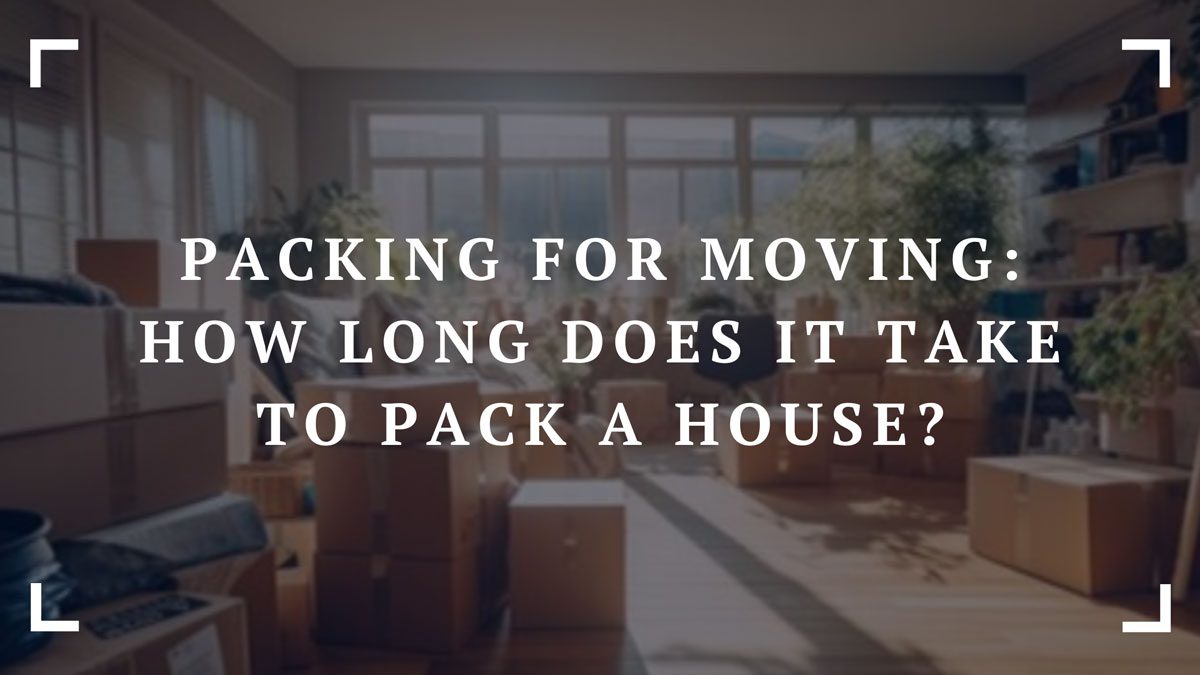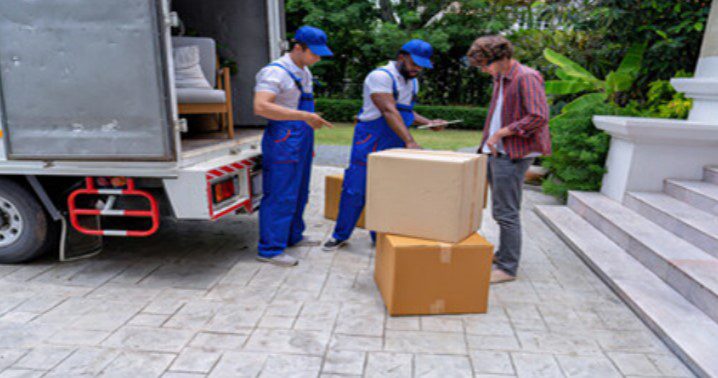Moving to a new home is an exciting milestone, but the process of packing can quickly become overwhelming. How long it takes to pack a house is a question that often lingers in the minds of many who are preparing for a big move.
The answer, however, is not a one-size-fits-all solution, as it depends on several factors unique to one’s situation. They include the following.

The Size of The House
The size of your home is one of the most important factors in determining how long it will take you to pack it. A larger house, usually having more rooms and square footage, would naturally need more time to pack compared to a smaller one.
If you are living in a big space with several bedrooms, a basement, an attic, a den, and other living areas then you might have to allocate a significant amount of time for everything to be moved into boxes well.
Typically, experts in this field suggest that it would take about 1-2 days to pack up a studio or 1-bedroom flat, around 3-5 days for two bedrooms, and approximately 5-7 days when packing three or four-bedroom houses.
However, these figures may vary significantly depending on the number of things one has and how well-organized an individual is within his or her premises.
Number Of Items In Your Home
The number of things you’ve kept over the years will also determine how long it will take to pack all your things. Some people have so few items that they can be packed within a matter of days, while others may have accumulated a lifetime’s worth of furniture, art pieces, and other sentimental objects such that they could need even weeks or months to fully get ready for a move.
Consider this real-life case: A three-bedroomed house with a garage and basement occupied by a family of four took almost six weeks to be filled into boxes. With decades’ worth of possessions including an extensive library and old-fashioned furniture, this family had to carefully split up, arrange up, and finally put away every item to avoid missing out on anything fragile.
Whether You Seek Assistance
In addition, if you are going to handle this work yourself or seek help from family friends, and professional packers then it will influence the time used in packing. The process can be fastened by seeking some help from people who are close to you but they should be available at a particular moment for an agreement on how the activity will be done together.

Alternatively, hiring competent packers and movers may prove crucial, especially for large families or households having delicate property. These experts know how to properly wrap your stuff without taking much time hence reducing the overall packing period considerably.
A professional packing team can usually pack up a three-bedroom house in as little as two to three days, which could take a family weeks. Though professional packing services may seem expensive, they can save you time, stress, and loss which means they are a good investment for many families.
How Well Organized You Are
In addition to other factors, the level of organization can affect how long it takes. If a good structure is maintained, it can facilitate easier packing. In contrast, if your belongings are scattered and disorganized, you may have to spend more time sorting through everything and packing in an orderly manner.
The importance of organization is illustrated by one family’s experience. After years of procrastination and living amidst clutter, they were overwhelmed when it came time to pack for their move. They had spent countless hours going through stacks of miscellaneous items with no clear system resulting in a boxing-up process that went on for three weeks – twice the time they had expected at first..
Efficient Strategies For Streamlining The Packing Process
You can make the packing process easier for yourself with some careful organization and planning, which will help you move house with minimal stress. Here are effective packing tips for moving.
Declutter and Organize

Your first task before you start packing is to clean up your home. Sort through all your things in each room and decide which ones are really necessary and which can be disposed of.
Reduce the number of items that you will be required to pack by giving away, selling, or throwing away anything that you do not use anymore. Classify the rest of them per category so that they can be packed and unpacked easily during the moving process.
Create a Packing Plan
Creating a comprehensive timeline for packing will enable you to work on the tasks step by step. It is important to note that organizing the rooms and articles in a way that prioritizes daily requirements allows one to pack the last most demanding items like drugs, towels and just a few pairs of clothes to be used during transit. Allocate particular time slots or days for packing every room or group of possessions, so that you don’t go astray.
Gather Packing Supplies in Advance
Prepare a list of all materials used in packaging i.e. boxes (different sizes), gum-like adhesive, bubble plastics, packing paper, labels, and markers. Get them ahead of your moving date to avoid rushing in the eleventh hour. This way you can pack without stopping and without delays.
Utilize a Room-by-Room Approach
When packing your items, it is important to focus on one room at a time and keep similar items together. This will not only help you stay organized but also make it easier for you when unpacking in your new house.
To ease the task of unpacking, it is advisable to mark each box clearly with the name of the room it belongs and a brief description of its contents so that it can be easily recognized where they are supposed to be placed.
Pack Strategically
Begin with non-essential stuff and clothes or boots that are only useful at a particular time of the year, keeping daily necessities for the last. Place heavy stuff at the bottom of boxes and fill spaces with clothes, fabrics, or soft things to avoid movements while moving. Make sure you evenly distribute weight in each box so that there are no excessively heavy loads that might be dangerous during relocation.
Label and Color Code
While naming boxes, you could also consider the implementation of a color-coding system for certain rooms or groups of goods. Each room can be assigned a specific color and then boxes marked with that color linking them to particular rooms or areas using colored stickers, tapes, or markers. This visual cue will make unpacking at your new home faster and minimize the chances of missing some boxes.

Through these strategies, you will not only streamline the packing process but also reduce stress and ensure a smooth transition to your new home. Remember to start early, stay organized, and don’t hesitate to enlist help when needed. With proper planning and execution, the packing experience can be a manageable stepping stone toward an exciting new chapter in your life.
Conclusion
If you have ever had to pack for a move, then you know that it can be an overwhelming task. With careful preparation and implementation, however, this could be quite manageable. When thinking about these things, consider how big your house is as well as the number of things in it and its state of tidiness among other factors thereby aiding in estimating the time needed.


